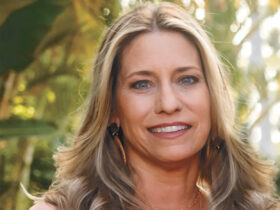By Julie S. Hurst- Nicoll, MBA, CMI, CMR – President, American Mold Experts
 The Importance of Humidity and Mold Checks
The Importance of Humidity and Mold Checks
Maintaining a healthy home environment is crucial for overall well-being, particularly for vulnerable populations such as young children, those with other health issues and the elderly. Among the many aspects of home health safety, two often overlooked but significant factors are humidity control and mold prevention. These elements are intricately linked, as excessive humidity creates a conducive environment for mold growth, which can have detrimental health effects.
The Role of Humidity in Home Health
Humidity refers to the amount of moisture in the air. While some humidity is necessary for comfort and health; excessive or insufficient levels can lead to problems. The ideal indoor humidity level is generally between 30% and 50%.
The Dangers of Mold
Mold is a type of fungus that thrives in moist or humid environments. It reproduces through tiny spores that are not visible to the naked eye and can easily become airborne. In addition mold produces a byproduct in addition to spores called mycotoxins. A poison which causes illness. Once inhaled, these spores and mycotoxins can cause a range of health problems. The health risks associated with mold include:
1. Respiratory Issues: Mold spores can trigger asthma attacks and allergic reactions, including sneezing, coughing, and throat irritation.
2. Infections: People with weakened immune systems are at higher risk of developing fungal infections from mold exposure.
3. Toxic Effects: Certain types of mold, such as Stachybotrys chartarum (black mold), produce mycotoxins, which can cause more severe health issues like chronic fatigue, headaches, and neurological problems.
Why the Elderly Are More Susceptible
The elderly are particularly vulnerable to the health effects of mold for several reasons:
1. Weakened Immune Systems: Aging naturally weakens the immune system, making it harder for the body to fight off infections and allergens.
2. Existing Health Conditions: Many elderly individuals have pre-existing health conditions such as asthma, chronic obstructive pulmonary disease (COPD), or cardiovascular diseases, which can be exacerbated by mold exposure.
3. Reduced Mobility: Limited mobility can make it difficult for the elderly to maintain a clean environment or to notice and address areas of excessive moisture or mold growth.
Steps for Controlling Humidity and Preventing Mold
Effective humidity control and mold prevention require a proactive approach. Here are some practical steps to help maintain a healthy home environment:
1. Use a Hygrometer: Regularly monitor indoor humidity levels with a hygrometer/humidity meter. Since rooms can vary based on air flow it’s better to place several throughout the home. Place them where you are likely to view to keep monitoring. Aim to keep humidity between 30% and 50%. Seeing a jump can indicate a new water intrustion or malfunction in your HVAC.
2. Ventilation: Ensure proper ventilation in high-moisture areas such as bathrooms, kitchens, and basements. Use exhaust fans (may have to leave on for longer than you plan on being there, leave the doors open to reduce moisture levels. Tip: Check how good your exhaust fan is working by placing a single piece of toilet paper by it to see if it is strong enough to hold at the fan. If not then replace with a stronger motor unit.
3. Dehumidifiers and Air Conditioners: Use dehumidifiers in damp areas and air conditioners during humid months to maintain optimal humidity levels especially if you notice your humidity is not staying below 50%.
4. Fix Leaks Promptly: Repair any leaks in roofs, walls, or plumbing to prevent moisture buildup. You typically have 24-48 prior to mold forming even if you cannot see. Remember mold is invisible to the eye until whicht time it has massively grown to a visual colony. Regularly check for signs of water damage underneath sinks, around tubs/showers, dishwashers and washers.
5. Use Mold-Resistant Products: In areas prone to dampness, use mold-resistant drywall, paint, and insulation materials.
6. Regular Cleaning: Clean and dry any damp or wet materials within 24-48 hours to prevent mold growth. Use mold-killing products for cleaning.
7. Professional Inspections: Consider having a professional conduct regular inspections for mold and humidity levels, especially if you notice persistent issues.
Conclusion
Maintaining proper humidity levels and preventing mold growth are critical components of home health safety. These measures are particularly important for protecting the health of the elderly, who are more susceptible to the harmful effects of mold. By monitoring humidity, ensuring proper ventilation, promptly addressing leaks, and using mold-resistant materials, homeowners can create a safer and healthier living environment. Regular mold and humidity checks are not just preventive steps; they are essential actions that contribute to the overall well-being and comfort of all household members.
American Mold Experts
Call today to schedule an assessment!
239-572-2216 or visit www.AMEswfl.com
Julie S. Hurst – Nicoll,
MBA, CMI, CMR
President, American Mold Experts
Serving Central Indiana & Southwest Florida
(Other States for Mold Toxic Patients/Clients Upon Arrangement)
Mold Inspections, Testing & NON-Destructive Remediation
Clearance Testing is ALWAYS INCLUDED in Warranted Jobs (excluding States that forbid clearance by Remediation
Company, ie Florida)
A+ Accredited Better Business Bureau (BBB)
IICRC Certified Company
FL License MRSA 3097, MRSR 3248









